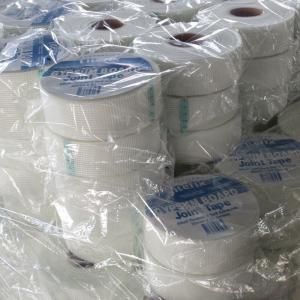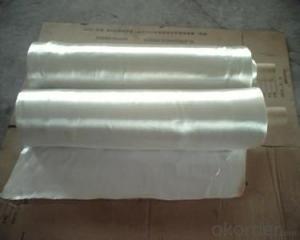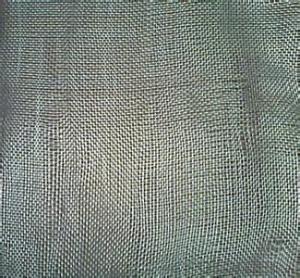Fiber High Silica Cloth
- Loading Port:
- China Main Port
- Payment Terms:
- TT OR LC
- Min Order Qty:
- -
- Supply Capability:
- -
OKorder Service Pledge
OKorder Financial Service
You Might Also Like
Fiberglass silica cloth
all models are available
1. fireproof, the fire-protection rate can be achieved between B1 to A2.
2. insulation, thermal insulation, glass fiber characteristics. It has high insulation and heat-perseveration functions, which can make the indoor temperature keep constant, can greatly reduce energy loss.
3.High tensile strength.
4. waterproof, water and steam impermeable.
5. aging- resistant, the life time is very long.
6. high temperature proof. do not become deformed under the temp of 500 c.
Color can be silver, red, black and so on. According to customers' request!
Silicone is a good coating, which can make the fiberglass cloth more soft, higher tensile strengh, better fireproof.
Silica cloth is high temperature fabric used for a wide range of insulation and protection applications in industry, excellent heat resistance.
Silica cloth is a special fiberglass cloth which contains more than 96% silicon dioxide, loss on Ignition less than 10%, it can withstand continuous temperatures of 1000 D.C. for long periods of time, and instantaneous temperatures of up to 1600 D.C. The product has been used extensively in the replacement of asbestos.
Silica fabric is primarily used in hot work such as welding and burning operations. It is useful for high temperature thermal and electrical insulation in severe application environments.
- Q:Can fiberglass fabric be used for reinforcement in automotive body panels?
- Absolutely! Automotive body panels can definitely benefit from the reinforcement provided by fiberglass fabric. This material is renowned for its exceptional strength, durability, and lightweight nature, making it the perfect choice for reinforcing body panels in cars. When combined with resins or other composite materials, fiberglass fabric offers the essential strength and rigidity required to withstand the demands of everyday use and ensure the safety of the vehicle's occupants. Moreover, the versatility of fiberglass fabric enables it to be molded into intricate shapes, granting greater flexibility in the construction of automotive body panels.
- Q:How is fiberglass fabric printed?
- Fiberglass fabric is typically printed using a process called screen printing. In this method, a mesh screen is used to transfer ink onto the fabric, creating the desired design or pattern. The screen is prepared by blocking out areas that are not to be printed, and then ink is pushed through the screen onto the fabric using a squeegee. This allows for precise and durable printing on fiberglass fabric.
- Q:How is fiberglass fabric used in the production of insulation ropes?
- Due to its exceptional thermal insulation properties and durability, fiberglass fabric is widely utilized in the manufacturing of insulation ropes. The fabric undergoes initial weaving or knitting using thin strands of fiberglass, resulting in a resilient and flexible structure. During the manufacturing process, it is customary to apply a heat-resistant silicone or acrylic coating to the fiberglass fabric. This coating serves to enhance its resistance to high temperatures and bolster its capacity to withstand wear and tear. Additionally, it functions as a preventive measure against the fabric becoming undone or frayed. To create the insulation ropes, the coated fiberglass fabric is skillfully braided or twisted, yielding a tightly woven rope-like formation. This construction technique allows the rope to effectively trap air and establish a thermal barrier, effectively impeding heat transfer and minimizing energy loss. The fiberglass fabric employed in insulation ropes exhibits remarkable resistance to fire, chemicals, and moisture, rendering it suitable for a range of industrial applications. It finds frequent use in HVAC systems, boilers, ovens, and other high-temperature environments where insulation is of utmost importance. In summary, fiberglass fabric assumes a critical role in the production of insulation ropes, offering outstanding thermal insulation, durability, and resistance to various environmental factors. These qualities make it an ideal material for insulating applications.
- Q:How to identify the warp and weft direction of glass fiber cloth?
- If there is a side, the yarn parallel to the side is warp
- Q:What is the UV resistance of fiberglass fabric?
- The UV resistance of fiberglass fabric is generally considered to be excellent. Fiberglass is inherently resistant to damage from ultraviolet (UV) radiation due to its composition and structure. The glass fibers used in fiberglass fabric are made from silica, which has natural UV resistance properties. Additionally, the fabric is usually treated with UV-resistant coatings or additives during manufacturing, further enhancing its ability to withstand prolonged exposure to sunlight. This UV resistance makes fiberglass fabric an ideal choice for outdoor applications where it will be exposed to direct sunlight for extended periods. It can be used in various industries and applications, including outdoor furniture, marine applications, automotive parts, and construction materials. The fabric's ability to resist UV degradation helps to maintain its physical properties and integrity over time, ensuring a longer lifespan and durability. However, it is important to note that while fiberglass fabric is highly UV resistant, prolonged exposure to intense sunlight may still cause some gradual degradation or discoloration over an extended period. Therefore, it is recommended to follow proper maintenance and care instructions to minimize any potential effects of UV exposure. Regular cleaning, protective coatings, and storing the fabric in shaded areas when not in use can help prolong its UV resistance and overall lifespan.
- Q:Can fiberglass fabric be used for making industrial curtains?
- Yes, fiberglass fabric can be used for making industrial curtains. It is a durable and fire-resistant material that can withstand high temperatures and provide insulation, making it suitable for industrial applications.
- Q:Is fiberglass fabric resistant to UV rays?
- Yes, fiberglass fabric is resistant to UV rays. Fiberglass is made from a combination of glass fibers and resin, which gives it excellent durability and resistance to various environmental factors, including UV radiation. The glass fibers used in fiberglass fabric are inherently resistant to UV degradation, making the fabric highly resistant to the harmful effects of the sun's ultraviolet rays. This makes fiberglass fabric a popular choice for applications such as outdoor furniture, awnings, boat covers, and other outdoor products that are exposed to sunlight. Additionally, fiberglass fabric's UV resistance ensures that it maintains its strength and integrity over time, even when exposed to prolonged sun exposure.
- Q:How does fiberglass fabric perform in weight-to-strength ratio?
- Fiberglass fabric performs exceptionally well in terms of weight-to-strength ratio. It is known for its high strength despite being lightweight, making it an ideal material for various applications where strength is crucial, such as aerospace, automotive, and construction industries.
- Q:Can fiberglass fabric be used for insulation in pipelines?
- Yes, fiberglass fabric can be used for insulation in pipelines. Fiberglass fabric is known for its excellent thermal insulation properties and is commonly used in various industrial applications, including pipeline insulation. It is an effective material for reducing heat loss or gain in pipelines and helps maintain the desired temperature of the transported fluid. Fiberglass fabric is lightweight, flexible, and easy to install, making it an ideal choice for insulating pipelines. Additionally, it is resistant to corrosion, moisture, and chemical exposure, ensuring long-term insulation performance.
- Q:How does fiberglass fabric handle repeated flexing and stretching?
- Fiberglass fabric is known for its exceptional durability and ability to withstand repeated flexing and stretching. Due to its inherent flexibility and high tensile strength, fiberglass fabric can handle these mechanical stresses without significant damage or loss of performance. The interwoven fiberglass strands provide the fabric with excellent resistance to compression, bending, and stretching, making it highly suitable for applications that require repetitive motion or dynamic loads. Additionally, the unique properties of fiberglass, such as its low coefficient of thermal expansion and high resistance to chemicals and moisture, further contribute to its ability to handle repeated flexing and stretching. Overall, fiberglass fabric is a reliable and robust material that can withstand the demands of various industries and applications.
1. Manufacturer Overview |
|
|---|---|
| Location | |
| Year Established | |
| Annual Output Value | |
| Main Markets | |
| Company Certifications | |
2. Manufacturer Certificates |
|
|---|---|
| a) Certification Name | |
| Range | |
| Reference | |
| Validity Period | |
3. Manufacturer Capability |
|
|---|---|
| a)Trade Capacity | |
| Nearest Port | |
| Export Percentage | |
| No.of Employees in Trade Department | |
| Language Spoken: | |
| b)Factory Information | |
| Factory Size: | |
| No. of Production Lines | |
| Contract Manufacturing | |
| Product Price Range | |
Send your message to us
Fiber High Silica Cloth
- Loading Port:
- China Main Port
- Payment Terms:
- TT OR LC
- Min Order Qty:
- -
- Supply Capability:
- -
OKorder Service Pledge
OKorder Financial Service
Similar products
New products
Hot products
Hot Searches
Related keywords



























